Dairy is a daily staple for many—but are you choosing the right kinds? From yogurts and cheeses to creamers and milkshakes, the dairy aisle is packed with options that range from incredibly nourishing to deceptively unhealthy. Some choices fuel your body with protein, calcium, and probiotics, while others sneak in added sugars, excess calories, and questionable ingredients. To help you separate the wholesome from the harmful, we’ve rounded up 7 dietitian-approved dairy picks that support your health and 7 you’re better off leaving on the shelf. Here’s how to shop smarter and feel better with every bite.
1. Greek Yogurt
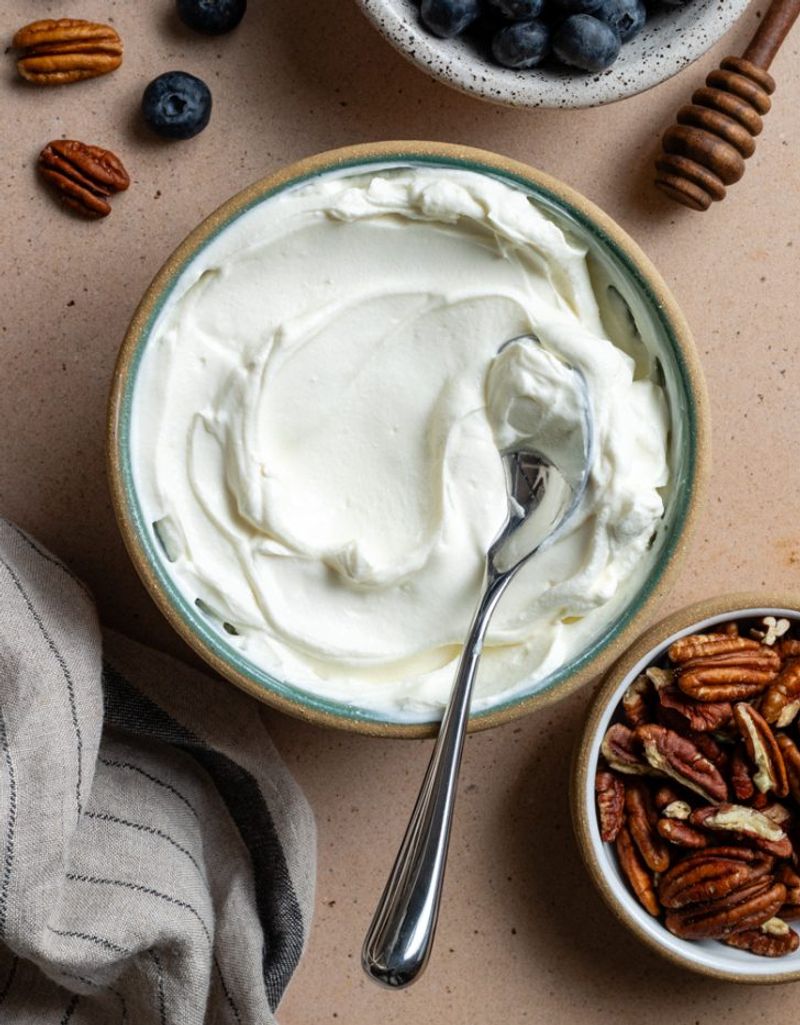
Creamy, thick, and satisfying, Greek yogurt packs twice the protein of regular yogurt while keeping you fuller longer. The straining process removes much of the lactose, making it friendlier for sensitive stomachs. Nutritionists celebrate Greek yogurt for its impressive probiotic content that helps maintain a healthy gut microbiome.
These beneficial bacteria support everything from digestion to immune function. Opt for plain varieties and add your own fresh fruit or honey to control sugar intake. A single serving delivers around 15-20 grams of protein – comparable to a small chicken breast but in a versatile form that works for breakfast, snacks, or cooking.
2. Kefir
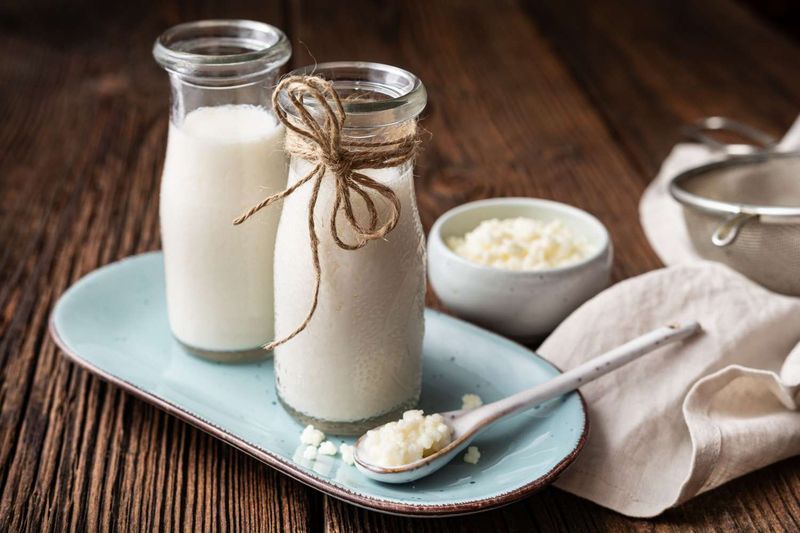
Ever tried drinking your yogurt? Kefir offers a tangy, drinkable alternative that’s packed with even more beneficial bacteria than traditional yogurt. This fermented dairy beverage originated in Eastern Europe centuries ago as a way to preserve milk. The fermentation process pre-digests much of the lactose, making kefir surprisingly tolerable for many people with lactose sensitivity. A single serving contains up to 30 different strains of beneficial bacteria and yeasts. Beyond gut health, regular kefir consumption has been linked to improved immune function and bone health. Try it straight, blended into smoothies, or poured over granola as a milk replacement.
3. Cottage Cheese
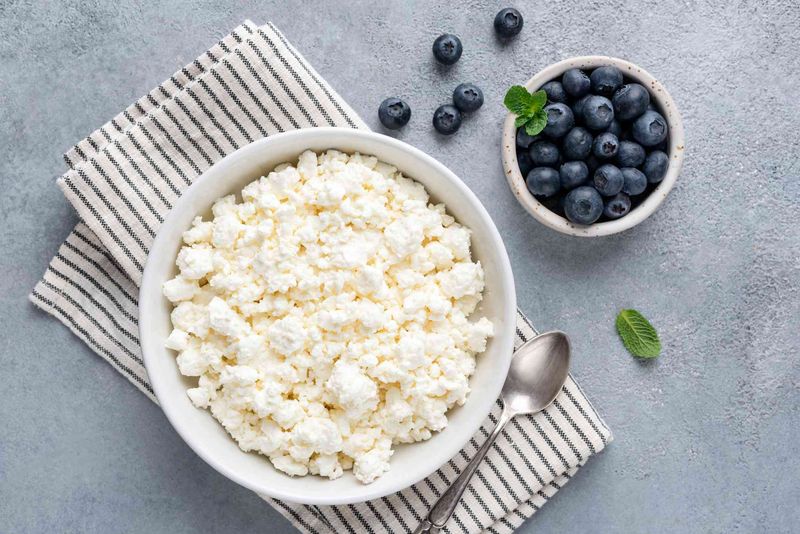
Bodybuilders have long kept this humble cheese in their fridges, and for good reason. Cottage cheese delivers an impressive protein punch while keeping fat content reasonable – especially if you choose low-fat varieties. Unlike many processed foods, cottage cheese offers a complete protein profile with all essential amino acids your body needs for muscle repair and growth. Its soft texture and mild flavor make it incredibly versatile in both sweet and savory dishes. For a quick, balanced meal, top cottage cheese with sliced fruit and a drizzle of honey, or go savory with cucumber, tomatoes, and a sprinkle of herbs. The slow-digesting casein protein keeps hunger at bay for hours.
4. Ricotta Cheese
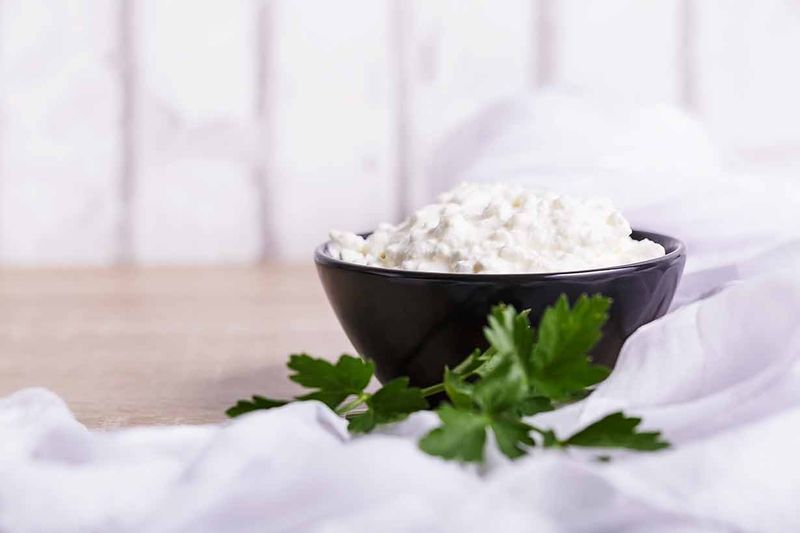
Traditionally made from whey leftover from other cheese production, ricotta represents resourceful food at its finest. Its mild, slightly sweet flavor and creamy texture make it a chameleon in the kitchen, working equally well in lasagna or cheesecake. Ricotta delivers impressive amounts of calcium – crucial for bone health – while providing a good dose of protein.
Part-skim versions offer a reasonable compromise between flavor and fat content. Beyond the nutritional benefits, ricotta’s versatility shines in both cooking and baking. Spread it on whole-grain toast with honey for breakfast, stuff it into pasta shells for dinner, or mix with a little cocoa and maple syrup for a protein-rich dessert alternative.
5. Skyr
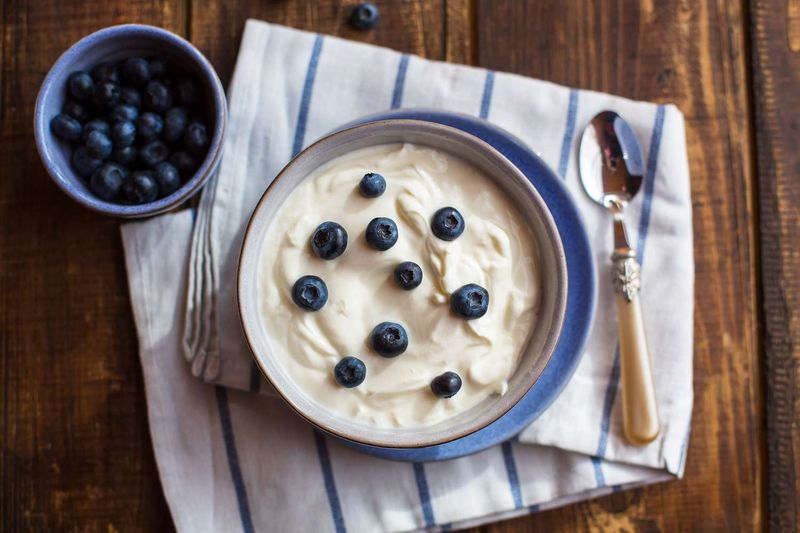
While Greek yogurt gets all the attention, this Icelandic dairy product quietly outperforms it in the protein department. Skyr (pronounced “skeer”) has been part of Icelandic cuisine for over a thousand years, traditionally made with skim milk for an incredibly thick, creamy texture. The nutritional profile impresses even the most skeptical dietitians – a typical serving packs around 20-25 grams of protein with minimal fat and sugar. The straining process removes most lactose while concentrating the protein, creating a satisfying mouthfeel without the heaviness of cream. Use skyr anywhere you’d use Greek yogurt – in smoothies, as a sour cream substitute, or simply topped with fruit and nuts. Its milder flavor appeals to those who find Greek yogurt too tangy.
6. Labneh
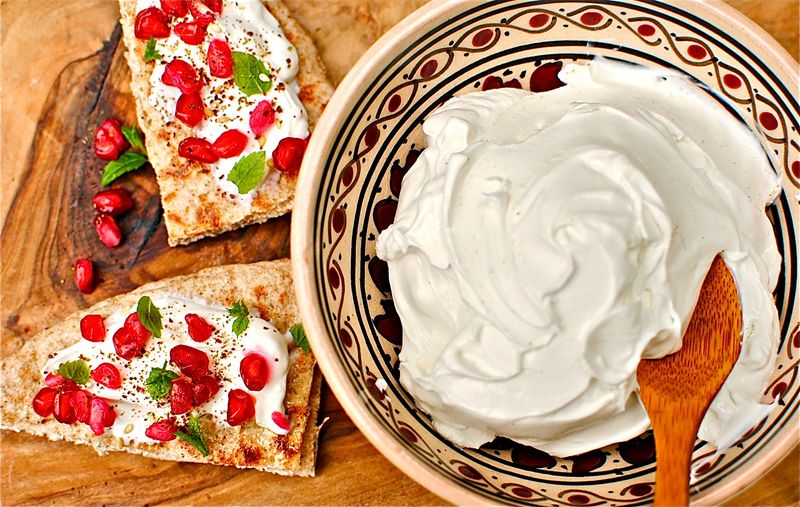
Silky, tangy, and irresistibly creamy, labneh bridges the gap between yogurt and cheese. This Middle Eastern staple is made by straining yogurt until it reaches a thick, spreadable consistency, concentrating both flavor and nutrients in the process. The straining removes much of the lactose, making labneh easier to digest for those with mild lactose sensitivity.
Its probiotic content supports gut health while providing protein and calcium without excessive calories. Traditionally served drizzled with olive oil and za’atar spice blend, labneh makes a nutritious dip for vegetables or spread for whole-grain bread. You can also use it as a healthier substitute for cream cheese or sour cream in many recipes.
7. Plain Yogurt
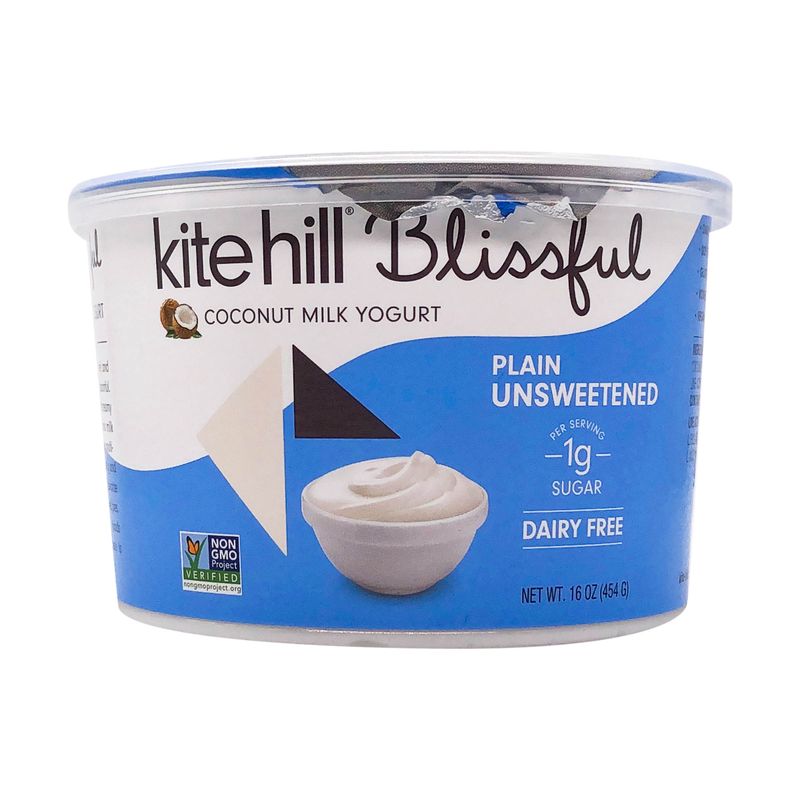
Sometimes the simplest option is the healthiest. Plain, unsweetened yogurt delivers probiotics, protein, and calcium without the unnecessary sugars found in flavored varieties. The live cultures in yogurt help maintain digestive balance while supporting immune function. Regular consumption has been linked to improved bone density, better weight management, and reduced risk of type 2 diabetes. Full-fat options provide fat-soluble vitamins and greater satiety, while low-fat versions offer fewer calories if that’s your priority. The culinary versatility of plain yogurt extends far beyond breakfast. Use it in marinades to tenderize meat, as a base for creamy salad dressings, or as a cooling counterpoint to spicy dishes like curry or chili.
8. Flavored Yogurts

Those colorful, fruit-adorned yogurt cups might seem like a healthy choice, but a closer look reveals a different story. Many flavored yogurts contain more sugar per serving than a candy bar – up to 29 grams in a single container! The health benefits of yogurt quickly disappear under this sugar avalanche. Manufacturers often use fruit imagery on packaging while using primarily fruit flavorings and minimal actual fruit. The vibrant colors frequently come from artificial dyes rather than natural ingredients. If you love fruit yogurt, create your own by adding fresh berries or a teaspoon of honey to plain yogurt. This simple swap cuts sugar dramatically while giving you control over ingredients and sweetness levels.
9. Full-Fat Ice Cream

That pint of premium ice cream delivers a perfect storm of nutritional concerns. A typical serving packs around 14-16 grams of saturated fat – roughly 75% of your daily recommended limit – alongside 20+ grams of sugar and 300+ calories in just half a cup. Most people consume double or triple the suggested serving size, turning an occasional treat into a significant dietary setback.
The combination of sugar and fat triggers powerful reward responses in the brain, making it particularly easy to overeat. For a healthier frozen treat, consider Greek yogurt-based alternatives, fruit sorbets, or making your own “nice cream” from frozen bananas. These options satisfy sweet cravings without the excessive fat and calorie load.
10. Processed Cheese Products

Those perfectly uniform, individually wrapped yellow squares barely qualify as cheese. Legally, many can’t even use the term “cheese” on their labels, instead using phrases like “cheese product” or “cheese food” due to their limited dairy content. A typical slice contains more artificial ingredients than actual cheese – emulsifiers, preservatives, artificial colors, and excessive sodium.
The manufacturing process strips away many beneficial nutrients found in real cheese while adding problematic additives. For convenient cheese options, choose pre-sliced real cheese varieties or portion out blocks of natural cheese yourself. The flavor improvement alone makes the switch worthwhile, not to mention the nutritional benefits of consuming actual food instead of food-like products.
11. Sweetened Condensed Milk

Behind that innocent can lies a dairy product that’s been transformed into essentially liquid candy. The production process removes water from milk and adds massive amounts of sugar – around 10 teaspoons per quarter cup! A single tablespoon contains roughly 65 calories and 11 grams of sugar, making it one of the most calorie-dense dairy products available. While occasionally useful in specific recipes, it should never be considered a nutritious dairy choice for regular consumption. For recipes calling for creaminess, consider alternatives like evaporated milk (which lacks the added sugar), coconut milk, or pureed silken tofu. These substitutions can maintain recipe texture while dramatically improving the nutritional profile.
12. Whipped Cream
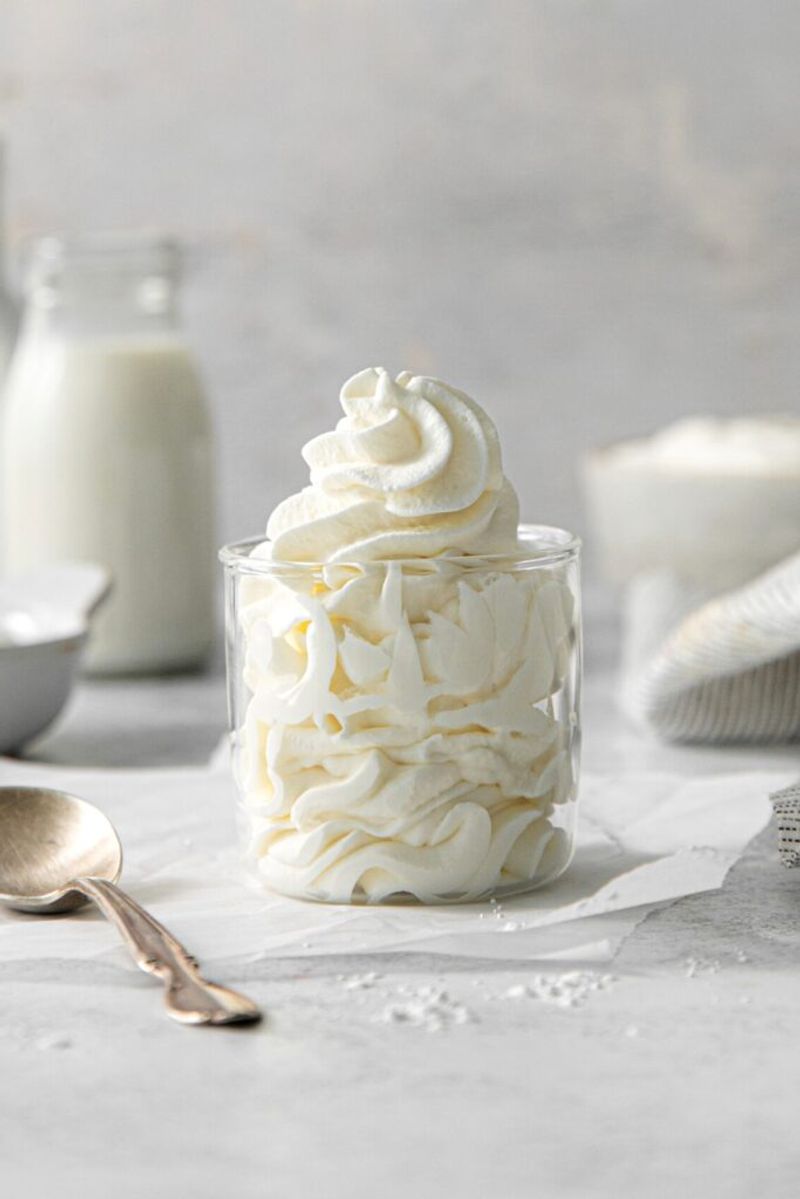
That cloud-like topping delivers virtually no nutritional benefits while adding significant saturated fat and sugar to your diet. Aerosol versions compound the problem by incorporating artificial flavors, preservatives, and propellants. The serving sizes listed on cans (typically 2 tablespoons) rarely match actual usage, with most people applying several times that amount.
Calorie counts quickly multiply when sprayed directly from can to mouth – a common late-night refrigerator raid. For special occasions when only whipped cream will do, consider making your own from heavy cream with minimal added sugar. Better yet, try whipped coconut cream or aquafaba (chickpea liquid) for plant-based alternatives with better nutritional profiles.
13. Coffee Creamers
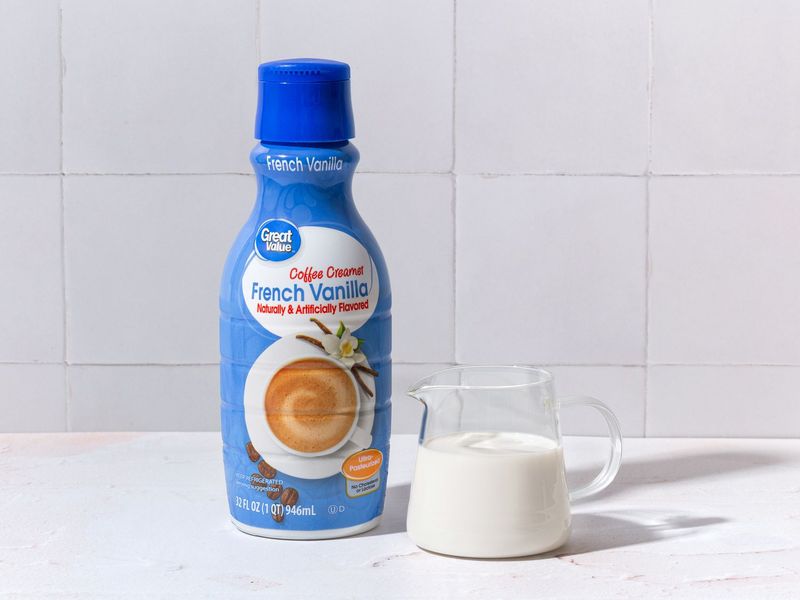
Many popular coffee creamers contain no actual cream or milk despite dairy-suggesting names and imagery. Instead, they’re concoctions of vegetable oils, corn syrup, artificial flavors, and preservatives designed to mimic dairy’s mouthfeel and taste. The ingredient lists often include partially hydrogenated oils (trans fats), which have been linked to increased heart disease risk. Even “fat-free” versions compensate with extra sugar and chemicals to maintain flavor and texture. For healthier coffee enhancement, consider milk, unsweetened plant milks, or a splash of real half-and-half. If you crave sweetness and flavor, try adding a drop of pure vanilla extract or a sprinkle of cinnamon instead of processed creamers.
14. Milkshakes

Restaurant and fast-food milkshakes have evolved far beyond milk and ice cream. A typical vanilla shake from a popular chain contains over 700 calories, 28 grams of fat, and a staggering 85 grams of sugar – equivalent to more than 21 teaspoons! These liquid desserts often incorporate ice cream premixes rather than real ice cream, along with artificial flavors, thickeners, and excessive sweeteners.
The nutritional havoc doesn’t stop at calories – the sugar load triggers insulin spikes while providing virtually no satiety. For a healthier alternative that satisfies milkshake cravings, blend frozen banana with a splash of milk and a tablespoon of cocoa powder. This simple swap delivers creamy satisfaction with actual nutritional benefits instead of empty calories.
Leave a comment